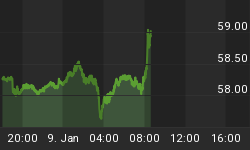Bill Gross of PIMCO spoke to Bloomberg Television's Trish Regan this afternoon during a special edition of "Street Smart" live from the Bloomberg Link convention headquarters in Tampa, FL and said that he expects more quantitative easing from the Federal Reserve "relatively soon" and that "they have a dual mandate."
Gross said "unemployment is still above 8% and it's obvious that the Fed isn't comfortable, nor is the nation or the economy with 8% unemployment going forward," but that "Ben Bernanke would agree that the next quantitative ease will produce limited results."
Gross on what he expects to hear from Bernanke in Jackson Hole on Friday:
"It is a conundrum, so to speak, to use the words of another Fed chairman. It could be a relatively snoozy type of speech in which the title of his speech is monetary policy since the crisis of 2008. We may just get a history of what he has done as opposed to hints of what he will do. I suspect he will substantiate what we read in the Fed minutes from their August meeting and that will be hints of quantitative easing should there be a lack of sustainable economic growth. And he and members of the Fed did not define that. I would suspect, unless the economy is growing at 3% plus for several quarters, we will see quantitative easing relatively soon."
On why the Fed would be willing to ease when the economy is seeing some glimmers of hope:
"They have a dual mandate. One of the mandates is inflation and inflation is actually below their 2% target and we should look from that standpoint alone as to additional easing to get it back up to 2%. And secondly, the mandate is in terms of economic growth, which in turn is connected to unemployment. Unemployment is still above 8% and it's obvious that the fed is not comfortable, nor is the economy and the nation comfortable with 8% unemployment going forward. until you see that number in the low 7s and until you see inflation exceeding above 2%, the fed is going to do what they have done in the past two to three years and that is to ease quantitatively."
On whether more quantitative easing is the right tactic:
"It is obvious that with each step, with QE1, QE2 and Twist, the effects have been more and more limited. From this point forward, even Ben Bernanke knows that aside from some extreme type of measure that the economic effects and the effects on equity markets and bond markets are going to be limited. He has been pointed over the past several quarters to the fiscal side and pointing to Washington as opposed to the Federal Reserve in terms of what they can do going forward with tax reform with some type of stimulative fiscal policies that propel the real economy forward as opposed to monetary policy. I think from this point forward, even Ben Bernanke would agree the next quantitative ease will produce limited results."
On whether the Federal Reserve needs more discipline:
"I think we do. Let's be frank, up until this point, the Taylor rule from John Taylor (of Stanford) has been a very applicable rule in terms of suggesting the need for more or less ease. From this point forward in terms of crossing the zero bound in terms of negative real interest rates, perhaps the Fed needs to adopt some additional rules. In August, the federal staff devoted a substantial period of discussion during that two day meeting to simple rules. They did not divulge exactly what those rules were, but John Taylor might be on to something in terms of developing some simple rule that monitors Federal Reserve monetary accumulation as opposed to the standard that we have now."
On whether there will be a point where the markets dictate that there needs to be a higher interest rate on Treasuries due to the debt:
"At some point, yes. At this point, the Federal Reserve is buying 70% of the Treasury's offering so the ticking time bomb is being met by the other hand. The Treasury issues debt and the Fed basically buys debt. At some point, if these policies are inflationary, then the vigilantes or those that hold dollar reserves, such as China and Brazil and Mexico, they will be in the driver's seat in terms of longer-term Treasury debt, 10 years and 30 years Treasury debt in terms of their yield. At the moment, however, as long as the Fed gives us an extended period of time until 2014 and maybe shortly in 2015, then the front end of the curve can be maintained. But it's that long end of the curve and ultimately the dollar valuation in global marketplaces is at risk."
On where he sees the 10-year at the end of 2012:
"Around these levels. It is hard to know, but the Fed is buying most of 10-year Treasury offerings. The Treasury will issue 10s, but then the Fed will buy 10s over the next several weeks so the yin and the yang and the flow between both hands is equalized. if the fed continues to maintain 25 basis points until 2015, then that helps to keep the 10-year Treasury low at 1.67%. It does not mean to me and to PIMCO and to other investors that we are not being financially repressed. That is an attractive yield. I simply don't think that. But will that yield change? I do not see that changing until the Fed itself suggests that they might raise interest rates and the Fed itself stops buying 10-year Treasuries."
















